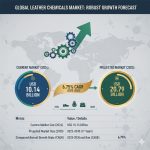Key Takeaways
- The global Anxiety Disorder Treatment Market is projected to grow from USD 11.8 billion in 2023 to USD 17.1 billion by 2032, at a CAGR of 3.7%.
- Market growth is fueled by rising mental health awareness, increased prevalence of anxiety disorders, and technological advancements in treatment.
- Major types of anxiety disorders include Generalized Anxiety Disorder (GAD), Panic Disorder, Social Anxiety Disorder, and others.
- Treatment options range from pharmacological interventions to psychotherapy and digital therapeutics.
- North America leads the market, while Asia-Pacific is emerging rapidly due to increased healthcare investments.
- Challenges include a shortage of mental health professionals, stigma, and side effects of treatments.
- Future trends point to digital therapeutics, personalized medicine, and innovative drug pipelines.
Overview of Anxiety Disorder Treatment Market
The Anxiety Disorder Treatment Market has witnessed significant transformation over the past decade, reflecting broader shifts in societal attitudes toward mental health and the rapid evolution of healthcare technologies. As of 2023, the market is valued at USD 11.8 billion and is expected to reach USD 17.1 billion by 2032, growing at a steady CAGR of 3.7%. This growth is underpinned by a confluence of factors, including increased awareness of mental health issues, a rising global prevalence of anxiety disorders, and the development of more effective and accessible treatment modalities.
Anxiety disorders are among the most common mental health conditions worldwide, affecting hundreds of millions of people. The spectrum of anxiety disorders includes Generalized Anxiety Disorder (GAD), Panic Disorder, Social Anxiety Disorder, Specific Phobias, and others such as Obsessive-Compulsive Disorder (OCD) and Post-Traumatic Stress Disorder (PTSD). Each of these conditions presents unique challenges in diagnosis and management, necessitating a diverse array of treatment options.
Treatment for anxiety disorders typically involves a combination of pharmacological and non-pharmacological approaches. Pharmacological treatments include selective serotonin reuptake inhibitors (SSRIs), serotonin-norepinephrine reuptake inhibitors (SNRIs), benzodiazepines, and newer classes of anxiolytics. Non-pharmacological interventions, such as cognitive-behavioral therapy (CBT), exposure therapy, and mindfulness-based therapies, have gained prominence due to their efficacy and lower risk of side effects. In recent years, digital therapeutics—such as app-based CBT and telepsychiatry—have emerged as valuable tools, expanding access to care and enabling personalized treatment plans.
The market is also characterized by a growing emphasis on patient-centric care, with healthcare providers and pharmaceutical companies increasingly focusing on personalized therapies tailored to individual patient profiles. This shift is supported by advancements in pharmacogenomics and digital health technologies, which allow for more precise diagnosis, monitoring, and treatment of anxiety disorders. the Anxiety Disorder Treatment Market is poised for continued growth, driven by ongoing innovation, expanding access to care, and a global commitment to improving mental health outcomes.
Key Drivers of Market Expansion
Several key drivers are propelling the expansion of the Anxiety Disorder Treatment Market, shaping its trajectory through 2032 and beyond. Foremost among these is the increasing prevalence of anxiety disorders worldwide. According to the World Health Organization, anxiety disorders affect more than 260 million people globally, a number that has risen steadily due to factors such as urbanization, economic uncertainty, and the lingering psychological impacts of the COVID-19 pandemic. This growing patient population is fueling demand for effective and accessible treatment options.
Rising mental health awareness is another critical driver. Public health campaigns, advocacy by non-governmental organizations, and high-profile endorsements by celebrities and influencers have helped destigmatize mental health issues, encouraging more individuals to seek help. Governments and healthcare systems are responding by investing in mental health infrastructure, expanding insurance coverage for mental health services, and integrating mental health into primary care settings.
Technological advancements are also reshaping the landscape of anxiety disorder treatment. The proliferation of digital health tools—ranging from telemedicine platforms to AI-powered mental health apps—has made it easier for patients to access care, particularly in underserved or remote areas. Digital therapeutics, which deliver evidence-based interventions via smartphones or computers, are gaining traction as both standalone treatments and adjuncts to traditional therapy. These tools offer the potential for real-time monitoring, personalized feedback, and greater patient engagement.
Pharmacological innovation remains a cornerstone of market growth. Pharmaceutical companies are investing heavily in research and development to create new classes of anxiolytics with improved efficacy and safety profiles. Advances in pharmacogenomics are enabling more personalized approaches to medication management, reducing the trial-and-error process that often characterizes psychiatric treatment. the growing demand for personalized therapies is driving innovation across the treatment spectrum. Patients and providers alike are seeking interventions that are tailored to individual needs, preferences, and genetic profiles. This trend is fostering collaboration between pharmaceutical companies, digital health startups, and academic institutions, accelerating the development and adoption of novel treatment modalities.
Competitive Landscape of the Market
The competitive landscape of the Anxiety Disorder Treatment Market is dynamic and multifaceted, characterized by the presence of established pharmaceutical giants, innovative biotech firms, and a burgeoning ecosystem of digital health startups. Key players in the market include Pfizer, GlaxoSmithKline, Eli Lilly, Johnson & Johnson, and AstraZeneca, all of which have robust portfolios of anxiolytic medications and ongoing research initiatives aimed at developing next-generation therapies.
Market segmentation is typically based on treatment type (pharmacological vs. non-pharmacological), disorder type (GAD, Panic Disorder, Social Anxiety Disorder, etc.), and end-user (hospitals, clinics, home care, digital platforms). This segmentation allows companies to target specific patient populations and tailor their offerings to meet diverse needs.
Collaborative efforts in research and development are a hallmark of the market. Pharmaceutical companies are increasingly partnering with academic institutions, contract research organizations (CROs), and digital health companies to accelerate the discovery and commercialization of new treatments. These collaborations often focus on leveraging cutting-edge technologies—such as artificial intelligence, machine learning, and big data analytics—to identify novel drug targets, optimize clinical trial design, and enhance patient outcomes.
In addition to traditional pharmaceutical players, the rise of digital therapeutics has introduced new competitors to the market. Companies like Pear Therapeutics, SilverCloud Health, and Woebot Health are pioneering app-based interventions that deliver cognitive-behavioral therapy and other evidence-based treatments directly to patients’ devices. These digital solutions are gaining acceptance among both patients and providers, offering scalable, cost-effective alternatives to in-person therapy.
The competitive landscape is further shaped by regulatory developments, with agencies such as the U.S. Food and Drug Administration (FDA) and the European Medicines Agency (EMA) playing a critical role in approving new treatments and setting standards for safety and efficacy. As the market continues to evolve, companies that can successfully navigate regulatory pathways, demonstrate clinical value, and adapt to changing patient needs will be best positioned for long-term success.
Regional Insights and Trends
Regional dynamics play a significant role in shaping the Anxiety Disorder Treatment Market, with notable variations in market size, growth rates, and treatment accessibility across different geographies. North America, led by the United States, currently dominates the global market, accounting for the largest share of revenue. This leadership is attributed to high levels of mental health awareness, robust healthcare infrastructure, widespread insurance coverage, and a strong presence of leading pharmaceutical and digital health companies.
The U.S. market, in particular, benefits from a proactive approach to mental health, with significant investments in research, public health campaigns, and policy initiatives aimed at expanding access to care. The availability of advanced treatment options, including the latest pharmacological therapies and digital health tools, further reinforces North America’s market dominance.
Europe represents another significant market, characterized by a well-established healthcare system and growing emphasis on mental health integration within primary care. Countries such as the UK, Germany, and France are at the forefront of adopting innovative treatment modalities and expanding mental health services.
The Asia-Pacific region is emerging as a key growth market, driven by rising healthcare investments, increasing mental health awareness, and a growing middle class with greater access to healthcare services. Countries like China, India, and Japan are witnessing rapid expansion in mental health infrastructure, supported by government initiatives and private sector investment. However, challenges such as limited availability of trained mental health professionals and persistent stigma continue to impact treatment accessibility in some areas.
Latin America and the Middle East & Africa represent smaller but growing markets, with increasing recognition of mental health as a public health priority. Efforts to improve mental health literacy, expand insurance coverage, and integrate digital health solutions are gradually enhancing access to anxiety disorder treatments in these regions. regional trends highlight the importance of tailored strategies that address local needs, regulatory environments, and cultural attitudes toward mental health. Companies that can adapt their offerings to diverse markets and collaborate with local stakeholders will be well-positioned to capitalize on global growth opportunities.
Challenges Facing the Market
Despite robust growth prospects, the Anxiety Disorder Treatment Market faces several significant challenges that could impact its trajectory. One of the most pressing issues is the global shortage of mental health professionals. According to the World Health Organization, there is a critical gap between the demand for mental health services and the availability of trained providers, particularly in low- and middle-income countries. This shortage limits access to evidence-based treatments and places additional strain on existing healthcare systems.
Stigma surrounding mental health remains a formidable barrier to care. In many cultures, anxiety disorders and other mental health conditions are still viewed as signs of personal weakness or moral failing, discouraging individuals from seeking help. Efforts to combat stigma through public education, advocacy, and policy reform are essential to improving treatment uptake and outcomes.
Side effects and acceptance of treatments also pose challenges. While pharmacological interventions can be highly effective, they are often associated with side effects such as drowsiness, weight gain, and sexual dysfunction, which can lead to poor adherence and discontinuation. Additionally, some patients are reluctant to use medication due to concerns about dependency or long-term health impacts. Non-pharmacological treatments, while generally safer, may require significant time and effort, and access to trained therapists can be limited.
Regulatory hurdles and reimbursement issues further complicate market dynamics. The approval process for new drugs and digital therapeutics can be lengthy and costly, and insurance coverage for mental health services varies widely across regions. Ensuring that innovative treatments are both accessible and affordable remains a key challenge for industry stakeholders. the COVID-19 pandemic has exacerbated existing challenges, increasing demand for mental health services while straining healthcare resources. The shift to remote care has highlighted disparities in digital access and underscored the need for scalable, flexible treatment solutions. Addressing these challenges will require coordinated efforts from governments, healthcare providers, industry leaders, and patient advocacy groups to ensure that all individuals have access to effective, evidence-based anxiety disorder treatments.
Future Trends and Developments
Looking ahead, the Anxiety Disorder Treatment Market is poised for significant transformation, driven by technological innovation, evolving treatment protocols, and a robust pipeline of new therapies. One of the most exciting trends is the rise of digital therapeutics—software-based interventions that deliver evidence-based treatments via smartphones, tablets, or computers. These tools are revolutionizing the way anxiety disorders are managed, offering scalable, cost-effective solutions that can be tailored to individual needs.
Artificial intelligence (AI) and machine learning are playing an increasingly important role in mental health care, enabling more accurate diagnosis, personalized treatment recommendations, and real-time monitoring of patient progress. AI-powered chatbots and virtual therapists are already being used to deliver cognitive-behavioral therapy and other interventions, expanding access to care and reducing the burden on human providers.
The evolution of treatment protocols is another key trend. There is growing recognition of the need for integrated, multidisciplinary approaches that combine pharmacological, psychological, and digital interventions. Personalized medicine, informed by advances in genomics and biomarker research, is enabling more targeted and effective treatment strategies, reducing the trial-and-error approach that has historically characterized anxiety disorder management.
The drug development pipeline is robust, with numerous candidates in various stages of clinical trials. These include novel anxiolytics with improved safety and efficacy profiles, as well as drugs targeting new mechanisms of action. Psychedelic-assisted therapies, such as those involving psilocybin and MDMA, are also being explored for their potential to treat refractory anxiety disorders, with early results showing promise.
Regulatory agencies are adapting to these innovations, developing new frameworks for the approval and reimbursement of digital therapeutics and novel pharmacological agents. This evolving regulatory landscape is expected to accelerate the adoption of cutting-edge treatments and expand access to care.
The future of the Anxiety Disorder Treatment Market is bright, with ongoing innovation, expanding access, and a growing commitment to improving mental health outcomes worldwide. Stakeholders who embrace these trends and invest in patient-centered, technology-enabled solutions will be well-positioned to lead the market in the years to come.
The Anxiety Disorder Treatment Market is undergoing rapid evolution, driven by rising awareness, technological advancements, and a commitment to personalized care. While challenges remain, the outlook is optimistic, with new therapies and digital tools poised to transform the landscape of anxiety disorder treatment for millions of people around the globe.
FAQs
- What factors are driving the growth of the Anxiety Disorder Treatment Market?
- How is mental health awareness influencing the Anxiety Disorder Treatment Market?
- What role do digital therapeutic tools play in the Anxiety Disorder Treatment Market?
- What is the projected growth rate of the Anxiety Disorder Treatment Market between 2025 and 2032?
![[Market Research Reports] – Research Google News Blog | VMR.Biz](https://www.vmr.biz/wp-content/uploads/2022/12/logo-removebg-preview.png)











